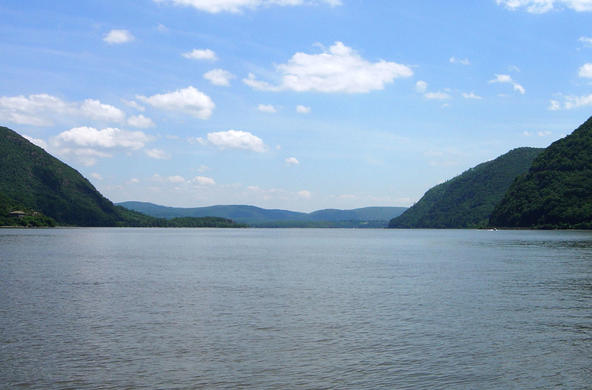Freshwater is essential to life, and healthy watersheds protect freshwater resources. Simply put, a watershed is an area of land that drains into a body of water, such as a lake or stream. About half of the rainwater makes its steady journey downward, through the watershed, where it will slowly recharge groundwater and flow into lakes, streams, the Hudson River, and beyond.
At the Cary Institute, our staff has investigated the ecology of watersheds for more than 25 years. Field sites range from the shorelines of the Hudson River to the streets of urban Baltimore. One thread is constant: Among the various projects human activities have profoundly altered is the way that watersheds function, often to the detriment of freshwater quality and biological health.
Below are three essentials about watersheds, with some suggested methods of reducing your watershed footprint. We all have a lot to gain by treading a little lighter on nature.
What you do in your watershed affects life downstream
Because water flows downhill, activities that take place in our homes, yards and businesses can influence the water quality of groundwater, wetlands, nearby streams and, ultimately, the Hudson River. Even seemingly benign day-to-day activities can have a big impact. Chemicals that are transported in our fresh waters include road salt, pesticides, fertilizers and pharmaceuticals.
Lighten the pollution load. Go easy on fertilizers and pesticides and don’t dump used motor oil or other unwanted substances onto the ground (unless you want to drink them later). Help prevent pharmaceutical pollution by avoiding the urge to flush unused drugs; opt for drug take-back programs instead. This keeps chemicals out of our freshwater systems, where they affect aquatic wildlife.
Development changes the way watersheds receive and deliver water
Human development has covered many landscapes with what scientists call “impervious surface.” This term refers to the replacement of permeable surfaces, such as fields and forests, with solid surfaces that do not absorb water.
Think about roadways, parking lots and rooftops; during rain events, these areas divert water into fast running channels, increasing flooding. Less water percolates into soils, where it can help recharge groundwater supplies. Pollutants sitting on the surface of roadways, such as motor oil, are swept into adjacent wetlands and water bodies. And fast moving runoff causes streams to fill with excess sediment, leading to the loss of stream bed habitat that is critical for animals such as juvenile fish, insects and mussels.
Smart building practices can help maintain the integrity of watersheds. These include not building in sensitive areas such as flood plains, minimizing impervious surface, and incorporating design elements that capture and retain water. When water soaks into the ground, pollutants can be filtered out and water volume is tempered, leaving us less prone to flooding.
Consider capturing runoff from roofs and driveways by planting a sunken rain garden. Here rain water can permeate the ground, replenishing groundwater and minimizing flooding downstream. Native wetland plants are recommended; when planted properly rain gardens can serve as wildlife habitat. Rain barrels can also minimize reliance on groundwater for home landscaping. Opt for fully enclosed models that are equipped with screens to prevent mosquitoes from breeding. (These are available at most home improvement and garden centers.)
Wetlands are a critical part of watersheds
Wetlands provide myriad important services, from filtering water pollutants and trapping sediments to abating storm water surges. They also serve as critical breeding habitat for amphibians, fish and waterfowl. For far too long humans have treated wetlands, such as the New Jersey Meadowlands, as dumping grounds. Thankfully, the “drain and fill” mentality of the 1950s and 1960s has waned and the public’s understanding of wetlands is increasing.
Far from being dank places that harbor illness, not only do healthy wetlands protect drinking water supplies, they also reduce the transmission of infectious diseases. This is because these biologically rich sites are home to an array of insects and animals. Numerous studies led by Cary Institute researchers have shown that when biodiversity is high, humans are less likely to contract diseases such as West Nile virus and Lyme disease.
If you have a wetland on your property, enjoy it. No matter how small, it is serving an important ecological role in your neighborhood. Keep your lawn away from its edges (at least 20 feet is ideal), allow native plants to flourish, and reap the rewards of wildlife visitors.






